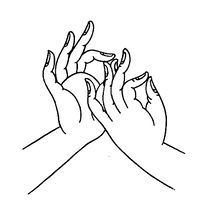Btsan kha bo che: Difference between revisions
No edit summary |
No edit summary |
||
| Line 13: | Line 13: | ||
|TibDateElement=Iron | |TibDateElement=Iron | ||
|TibDateAnimal=Bird | |TibDateAnimal=Bird | ||
|ReligiousAffiliation= | |ReligiousAffiliation=Kadam | ||
|StudentOf=grwa pa mngon shes; Sajjana | |StudentOf=grwa pa mngon shes; Sajjana | ||
|BiographicalInfo="Tsen Kawoché . . . is often thought to be the first Tibetan to have taught what later came to be known as the Zhentong view." [[The Buddha from Dolpo (1999)|See Stearns 1999]], 42–3 and 88–9. | |BiographicalInfo="Tsen Kawoché . . . is often thought to be the first Tibetan to have taught what later came to be known as the Zhentong view." [[The Buddha from Dolpo (1999)|See Stearns 1999]], 42–3 and 88–9. | ||
Revision as of 13:32, 26 July 2018
| PersonType | Category:Classical Tibetan Authors |
|---|---|
| MainNamePhon | Tsen Kawoche |
| MainNameTib | བཙན་ཁ་བོ་ཆེ་ |
| MainNameWylie | btsan kha bo che |
| BiographicalInfo | "Tsen Kawoché . . . is often thought to be the first Tibetan to have taught what later came to be known as the Zhentong view." See Stearns 1999, 42–3 and 88–9.
|
| YearBirth | 1021 |
| TibDateGender | Female |
| TibDateElement | Iron |
| TibDateAnimal | Bird |
| ReligiousAffiliation | Kadam |
| StudentOf | grwa pa mngon shes · Sajjana |
| BDRC | https://www.tbrc.org/#!rid=P4654 |
| IsInGyatsa | No |
| PosBuNayDefProv | Definitive |
| PosBuNayDefProvNotes | Karl cites ShAkya mchog ldan:
"The definitive meaning that he found from having studied the dharmas of Maitreya is explained by those in his lineage as follows. The sugata heart is the naturally pure wisdom, luminous by nature, that pervades [everyone] from buddhas to sentient beings. In earlier times these [two approaches] were known as "the difference between explaining the dharmas of Maitreya as the tradition of characteristics (mtshan nyid kyi lugs) and explaining them as the meditative tradition (sgom lugs)." However, in both cases there is no contradiction because the explanation according to the first approach is more profound at the time of eliminating the clinging to characteristics, while the explanation according to the latter approach is needed so that the sugata heart can function as the support of qualities." Karl Brunnhölzl, When the Clouds Part, p. 124. |
| PosAllBuddha | Yes |
| PosAllBuddhaMoreNotes | Karl cites ShAkya mchog ldan: "The sugata heart is the naturally pure wisdom, luminous by nature, that pervades everyone from buddhas to sentient beings." Karl Brunnhölzl, When the Clouds Part, p. 124. |
| PosWheelTurn | Third Turning |
| PosWheelTurnNotes | "Kunga Drölcho provides some context for Dsen Kawoché’s view and for the following excerpts from the latter’s teachings, which Kunga Drölcho compiled as Guiding Instructions on the View of Other-Emptiness:
As for the Guiding Instructions on the View of Other-Emptiness, Dsen Kawoché said, "The Kashmiri paṇḍita Sajjana made the following very essential statement: ‘The victor turned the wheel of dharma three times—the first wheel teaches the four realities of the noble ones, the second one teaches the lack of characteristics, and the final one makes excellent distinctions. Among these, the first two do not distinguish between what is actual and what is nominal. The last one was spoken at the point of certainty about the ultimate by distinguishing between the middle and extremes and by distinguishing between phenomena and the nature of phenomena. " Karl Brunnhölzl, When the Clouds Part, pp. 142-143. |
| PosYogaMadhya | Yogācāra |
| PosYogaMadhyaNotes | Karl cites Kongtrul stating, "TOK calls Ngog’s tradition of the Maitreya texts "the oral transmission of explanation" (bshad pa’i bka’ babs) and Dsen’s lineage, "the oral transmission of practice" (sgrub pa’i bka’ babs), saying that they are asserted to hold the views of Madhyamaka and Mere Mentalism, respectively." Karl Brunnhölzl, When the Clouds Part, p. 124. |
| PosAnalyticMedit | Meditative Tradition |
| PosAnalyticMeditNotes |
|
| PosEmptyLumin | Tathagatagarbha as Mind's Luminous Nature |
| PosEmptyLuminNotes |
|
| Other wikis |
If the page does not yet exist on the remote wiki, you can paste the tag |
"Tathagatagarbha as Mind's Luminous Nature" is not in the list (Tathāgatagarbha as the Emptiness That is a Non-implicative Negation (without enlightened qualities), Tathāgatagarbha as the Emptiness That is an Implicative Negation (with enlightened qualities), Tathāgatagarbha as Mind's Luminous Nature, Tathāgatagarbha as the Unity of Emptiness and Luminosity, Tathāgatagarbha as a Causal Potential or Disposition (gotra), Tathāgatagarbha as the Resultant State of Buddhahood, Tathāgatagarbha as the Latent State of Buddhahood that is Obscured in Sentient Beings, There are several types of Tathāgatagarbha, Tathāgatagarbha was Taught Merely to Encourage Sentient Beings to Enter the Path) of allowed values for the "PosEmptyLumin" property.

